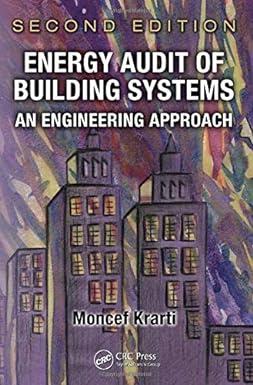Question
om used to run his own business, a small cafe in the East of Singapore. Last year, due to water damage from a flash flood,
om used to run his own business, a small cafe in the East of Singapore. Last year, due to water damage from a flash flood, not only did he lose a substantial part of his inventory; but his cafe also sustained damages. In order to carry on the business, he sold the cafe to his friend, Bill, who invested money to replace/repair damaged shop fixtures and machines, and to purchase new inventory. The small cafe offers coffee and tea, and light food snacks bought from outside suppliers. The snacks are heated up in the cafe and served. There is only one other worker, a waiter. Tom is now the manager. Between the two of them, they make drinks, serve customers, and clean up.
When he was running his own business, Tom did not receive a salary. Now he is paid $2,500 per month. The waiter is paid $1,000 a month. They both work from 9 am to 8 pm, six days a week. Tom is also in charge of purchasing for the cafe. In the past, he bought inventory in bulk to get a lower price. However, as the inventory is perishable, it often spoils and at the end of each quarter about 30% is thrown away. This spoilage cost has been factored into the cost of ingredients per set. The cafe sells drink & snacks in a set. The average ingredient costs for each set is $2.20 and it is sold at $4 per set. Rent and utilities average $2,500 per month. The business uses the number of sets as an allocation base for its overhead costs.
The budgeted sales for the next five quarters for the cafe are stated below
| No. of sets | |
| Quarter 1 of 2018 | 11,200 |
| Quarter 2 of 2018 | 12,400 |
| Quarter 3 of 2018 | 22,600 |
| Quarter 4 of 2018 | 25,800 |
| Quarter 1 of 2019 | 14,400 |
(a) If Tom is evaluated based on budgeted profit for the cafe, explain how Bill should rate Toms performance for the first two quarters of 2018 if the actual sales for the cafe are as follows (assume there are differences in the budgeted and actual costs per set of meal and selling price per set of meal). (Hint: Flexible Budget)
| Actual no of sets | |
| Quarter 1 of 2018 | 13,200 |
| Quarter 2 of 2018 | 12,000 |
(b) The cafe pays for purchases of ingredients one quarter later. All other expenses are paid for in cash in the same quarter. Assuming the cafe has a cash balance of $28,400 and no outstanding ingredients payments at the beginning of 2018 from purchases in Quarter 4 of 2017, construct the cash budget for Quarter 2 and Quarter 3 of 2018.
Step by Step Solution
There are 3 Steps involved in it
Step: 1

Get Instant Access to Expert-Tailored Solutions
See step-by-step solutions with expert insights and AI powered tools for academic success
Step: 2

Step: 3

Ace Your Homework with AI
Get the answers you need in no time with our AI-driven, step-by-step assistance
Get Started


